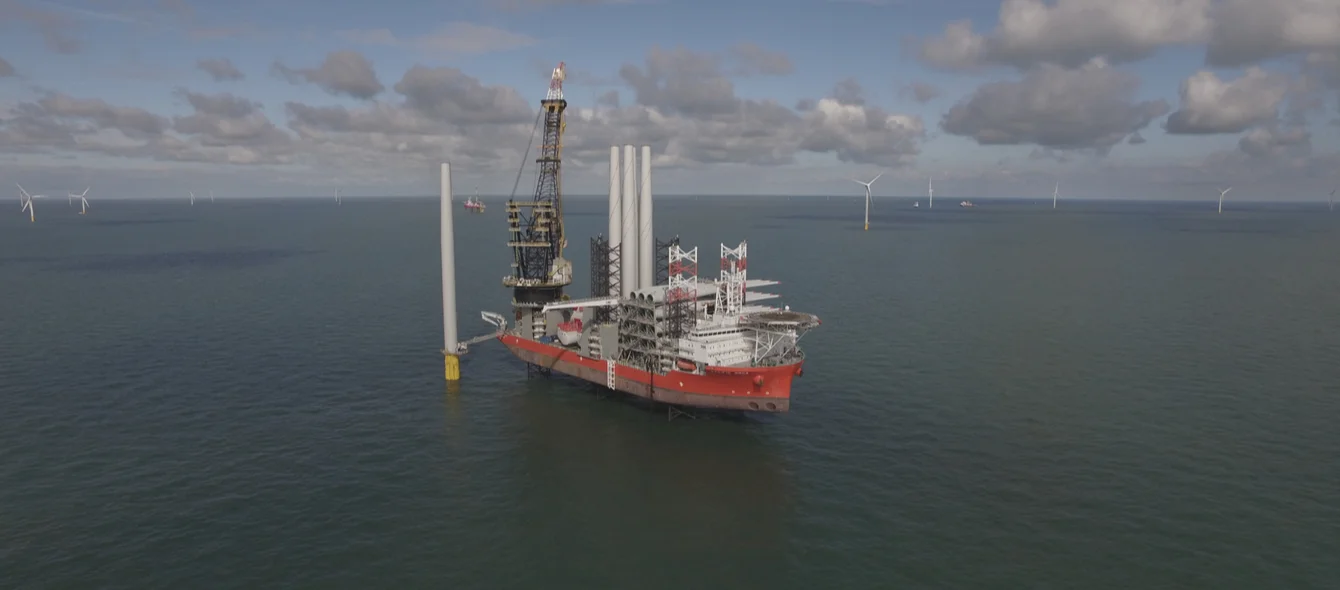The UK’s third round of renewable energy auctions have delivered a massive 30% reduction in offshore wind costs. The result is even more impressive considering the 44% drop over the last decade, highlighted in a press release by the International Energy Agency September 20.
The renewable energy auction was held under the government’s Contracts for Difference (CfD) programme and saw the most competitive bids come in at a strike price of just £39.65/MWh (2012 prices), compared with £57.50/MWh in the second round in 2017. Taking inflation into account the latest awards represent the equivalent of about £45-£47/MWh in today’s money.
The strike price represents what wind developers will be paid for the electricity generated. Under the CfD scheme, if the wholesale electricity price is lower than the strike price, operators receive a top-up to that level, but if wholesale electricity prices are higher, they return the difference, protecting consumers in the event of high prices in the wholesale electricity market.
The UK’s Department of Business, Energy and Industrial Strategy currently forecasts the wholesale electricity price in 2024 at £56/MWh (2018 prices), suggesting that the latest round of offshore wind projects could cost the state nothing, a major turning point for the UK offshore wind industry, consumers and government. Half of the newly-awarded capacity has to be online by 2023-2024 with all of the winning projects completed in 2024-25.
Innogy to build largest single project
The single largest project awarded in the round was innogy Renewables’ 1.4-GW Sofia offshore wind farm at the record low strike price of £39.65/MWh. Once the transaction between E.ON and RWE announced in March 2018 is complete, Sofia will be one of the largest projects in RWE Renewables’ substantial portfolio of renewable energy projects.
A further 1,212 MW of offshore wind was awarded at £39.65/MWh and 2,854 MW at £41.611/MWh, largely consisting of the three large-scale offshore wind farms to be sited at Dogger Bank. In total, 5.466 GW of offshore wind capacity was awarded, 275 MW of remote island wind and 33.6 MW of advanced conversion technology.
Onshore wind and solar power projects were not included in the round, but this was the first time that remote onshore island wind projects could apply.
innogy’s Sofia wind farm project is also located in the Dogger Bank zone, which benefits from shallow waters, a strong wind resource and economies of scale, given the large size of the projects to be built there. Although relatively far from shore at 130 kilometers, the use of next generation high voltage direct current technology, digitalisation and large turbines are expected to cut costs.
The contracts awarded to the auction winners run for 15 years. Half of the newly-awarded capacity has to be online by 2023-2024 with all of the winning projects completed in 2024-25.
Sofia Offshore Wind Farm
- Installed capacity: 1.4GW
- Location: 195km off the coast of England’s North East
- Site size: 593km2
- Maximum turbine height: 315m to the tip of the rotor blade
- Landfall location: Between Redcar and Marske-by-the-Sea, Teesside
- Onshore infrastructure: A 7km cable will carry power from landfall to a new converter station in the Wilton Complex
- Number of homes: Sofia will generate enough energy to supply approximately 1.2 million UK homes with electricity per annum
7 GW-plus 4th round announced
Just one day before the third round results were announced the UK’s Crown Estate unveiled the terms of a fourth round, which could see more than 7 GW of new offshore wind developed.
The fourth round focuses on fixed foundation projects in water depths up to 60 metres and includes leases extended from 50 years to 60 years. Each of the four zones included in the round can have a maximum of 3.5 GW to balance capacity around the country. The maximum project size is 1.5 GW with minima of 600 MW for the Dogger Bank zone and 400 MW for other areas.
The fourth round process will start in October and run until autumn 2020 with new awards possible as early as 2021. In addition to the Dogger Bank area, areas off eastern and south eastern England, as well as off northern Wales in the Irish Sea, could be developed. The UK already has more offshore wind than any other country in the world with 9.3 GW in operation and 4.4 GW under construction. The achievement of record low prices in the third round and the announcement of a 7 GW-plus fourth round are huge steps forward in delivering the government’s target of 30 GW offshore wind by 2030 – and at costs well below former expectations.
